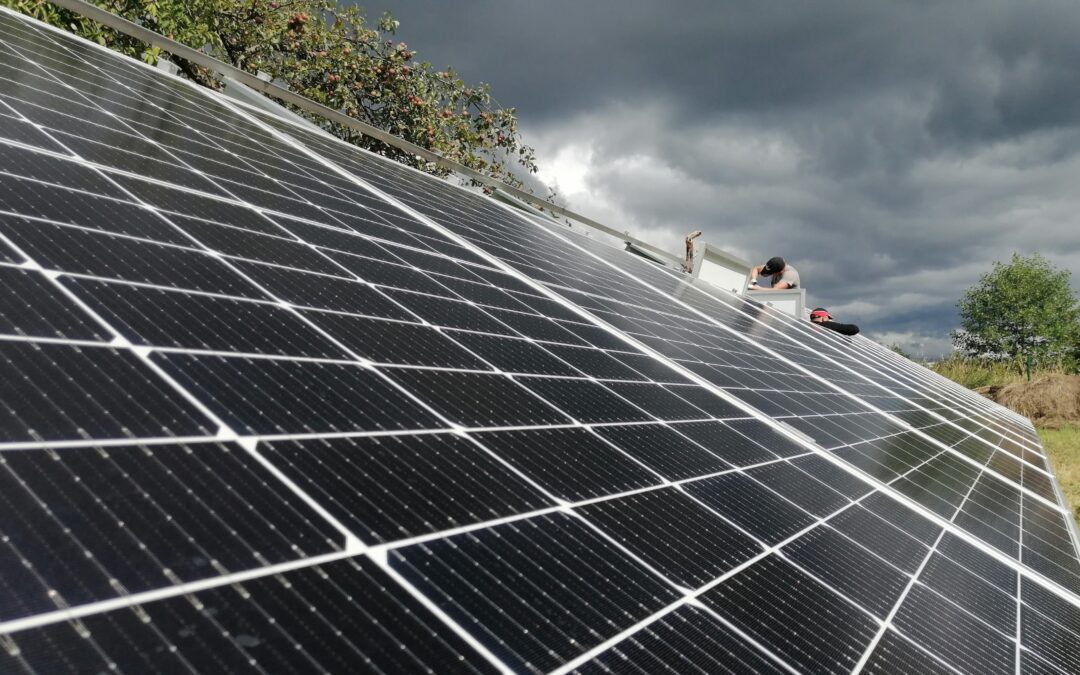By Jakub Wiech
Photovoltaics in Poland has been a boom industry in recent years thanks to state subsidies. A new law, however, will place major curbs on the development of the sector by making solar installations less attractive to homeowners. Although politicians assure that it will still make sense to invest in solar, the industry is looking to the future with uncertainty.
Empire of the Sun
In the last two years, the capacity of Polish solar power installations has increased by a factor of 10. As recently as late 2019, photovoltaics (PV) accounted for just 600 megawatts. By 15 November 2021, Polish electricity transmission operator PSE estimated the figure at some 6,100 megawatts.
This dramatic increase in PV installations was possible thanks to an effective support mechanism, the Mój Prad (My Electricity) programme, which offered households a subsidy up to 5,000 zloty for purchasing a solar power installation. This mechanism triggered leverage and persuaded hundreds of thousands of Poles to spend money on the technology.
A powerful solar industry soon emerged: PV installation companies stormed the stock market, their telemarketers called residents of towns and villages to offer their services, and more and more roofs around the country were soon covered with the distinctive panels.
But it is not only subsidies that have caused the boom in photovoltaics. An increasing number of Poles have begun to appreciate the risks of increasing electricity prices, with Poland’s coal-based, high-emitting energy industry no longer coping with the burdens of the EU emissions trading system.
Increasing prices of CO2 emissions permits, which in 2021 approached the astronomic level of €80 per tonne, have resulted in rising electricity bills for individual consumers. Investment in home solar electricity installations offered a certain solution to this problem, allowing investments to be covered within as little as six years.
Yet the solar eruption will soon come to an end. All because of new regulations that President Andrzej Duda signed into law on 15 December.
Sunset Boulevard
The new law, contained in amended legislation on renewable energy sources, changes the payment system that prosumers (individuals who both use and generate electrical energy) have been benefiting from to date.
The previous model depended on so-called rebates, meaning cashless settlements between the prosumer and the energy vendor, which assumed that the owner of the PV installation could “claim back” 80% of the energy they put into the network without incurring any payments.
In this arrangement, the electrical energy grid was treated as a virtual warehouse in which PV owners “stored” their excess of energy generated in summer, for example, before collecting it in less sunny periods. These conditions were very favourable for prosumers, enabling them to reduce their electricity bills significantly.
Now, though, this system is to change. It will be based on so-called net-billing, in which prosumers will settle the bill for the energy they generate based on a special model related to the price for a megawatt-hour set on so-called day-ahead trading. All PV owners will have their own deposit account in which the money they collect from giving their produced energy to the grid will be recorded.
When taking energy for themselves, meanwhile, they will have to pay the same amount as other consumers. This change will hit the viability of home solar power hard, making the period of return from PV investments much longer.
According to the new law, applicants requesting that their PV installation be added to the network by 31 March will be able to make use of the current rebate system for the next 15 years. But the question is: what next for Polish solar energy?
Tears of the Sun
The Polish government says the changes are essential to adapt to EU energy market directives and to deal with the problem of overloading the electrical energy network with increasing numbers of prosumers.
The recently replaced climate and environment minister, Michał Kurtyka, noted that the changes in the law are meant to direct PV users towards self-consumption. “Energy transfer is very costly, as much as production itself,” he said. There are no concrete data on this problem, however.
The work on the changes took places amid chaos. The ministry had been pointing out the need to reform the system for several months, but there were various concepts for what this rearrangement should look like across the governing camp.
One proposal – put forward by former development minister Jadwiga Emilewicz – was withdrawn in late October after a tempestuous meeting of the energy, climate and state assets committee, which added a string of amendments,
Less than a day later, another politician from the ruling camp, Marek Suski, presented his own bill, which passed through the lower-house Sejm at express pace. The upper-house Senate suggested alterations to these changes, submitting its own proposals that would, for example, extend the transition period by another two years (to 1 January 2024). But MPs rejected these proposals.
It was this muddled implementation of the changes as well as a lack of analyses on their effects that were among the main arguments of critics of the new regulations.
“What is alarming is the chaos and pace of the Sejm’s work on an amendment bill submitted in the form of an MP’s legislative initiative, as well as the lack of evaluation of the effects of the regulation, particularly the omission of a costs and benefits analysis of the changes introduced,” Anna Frączyk, legal adviser for ClientEarth, told Dziennik Gazeta Prawna.
“Omitting analysis and evaluation of the consequences of the regulation and acceptance of short-term dates for its implementation means that we do not know what effect this solution will have on the further development of distributed generation in Poland,” Frączyk continued.
The changes have also been criticised by activists from Polish Smog Alert, who in June wrote to Prime Minister Mateusz Morawiecki about the issue. Their letter contained an appeal to maintain the rebate system owing to the beneficial effect of photovoltaics on air quality.
The activists noted that the restrictions placed on the development of solar power, which benefits household energy bills, have a negative effect on interest in heat pump technology, a common replacement for domestic coal-fired stoves within the government’s Clean Air programme.
“Many Clean Air beneficiaries opt to exchange coal heating furnaces for this very reason that it offers them an attractive payment system and access to cheap electrical energy from their own photovoltaic installation,” said Andrzej Guła, head of Polish Smog Alert.
In short, the hastily adopted changes place question marks not only over the development of solar energy, but also over the general state of renewable and low-emissions sources in Poland.
Setting sun
To understand the consequences of curbs on the development of photovoltaics in Poland, it is worth describing the role solar power plays in the Polish electrical energy system. It is above all a safeguard, protecting the system in three ways.
Firstly, given Poland’s geographical location, the capacity factor (CF) in its PV power installations is small – around 11%. This means that within a year, for each megawatt of Polish capacity installed in PV, only 110 kilowatts will operate fully.
Yet even technologies with such a modest CF can help the electrical energy system in certain specific situations. Such cases include the peak of summer energy demand. This comes in a period in which repair shutdowns of large conventional units are planned and periodic problems with cooling of certain power plants occur. This culmination of factors means that during the summer demand peak, the Polish system can easily have capacity shortages.
The risk grows from year to year, as the coal-fired power stations that Polish electrical energy is based on are largely antiquated and therefore susceptible to breaking down. Around 70 coal units in Poland have already exceeded their planned working time, thereby putting them at risk of so-called unplanned events, often resulting in a unit falling out of the system.
From this perspective, photovoltaics (which works at full steam in the summer season) appears to be a useful safeguard that can supply crucial megawatts at peak demand times to saturate the system with capacity.
Secondly, the Polish system is in dire need of renewables. Its current profile is a coal monoculture: Poland has the highest share of coal in its energy mix in the European Union, which results not only in the economy being burdened with the need to purchase emissions permits, but also problems with achieving climate goals.
Thirdly, PV is an effective instrument in reducing electricity bills, which will grow in the coming years. Last week, Poland’s Energy Regulatory Office agreed to tariffs increasing electricity prices for individual consumers in 2022 by around 24%.
The government plans to mitigate the situation with protective measures – but at the same time it is abandoning a solution that can be called a quasi-market mechanism, because Polish support for PV previously operated according to these principles.
Dark clouds have gathered over solar panels in Poland. The changes signed into law by the president are unlikely to cut out PV investments entirely. But they could well put people off spending money on these solutions.
Translated by Ben Koschalka. Main image credit: Piotr Skornicki / Agencja Gazeta





















